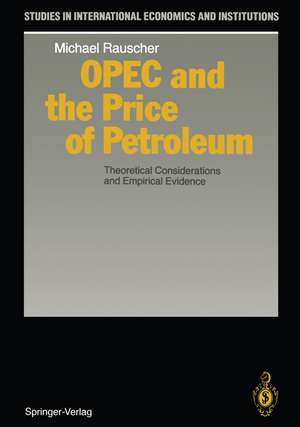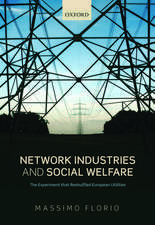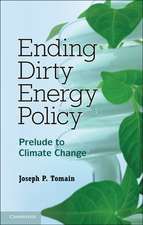OPEC and the Price of Petroleum: Theoretical Considerations and Empirical Evidence: Studies in International Economics and Institutions
Autor Michael Rauscheren Limba Engleză Paperback – 14 mar 2012
Preț: 387.75 lei
Nou
Puncte Express: 582
Preț estimativ în valută:
74.19€ • 77.47$ • 61.41£
74.19€ • 77.47$ • 61.41£
Carte tipărită la comandă
Livrare economică 04-18 aprilie
Preluare comenzi: 021 569.72.76
Specificații
ISBN-13: 9783642839283
ISBN-10: 3642839282
Pagini: 224
Ilustrații: XII, 206 p.
Dimensiuni: 170 x 242 x 12 mm
Greutate: 0.41 kg
Ediția:Softcover reprint of the original 1st ed. 1989
Editura: Springer Berlin, Heidelberg
Colecția Springer
Seria Studies in International Economics and Institutions
Locul publicării:Berlin, Heidelberg, Germany
ISBN-10: 3642839282
Pagini: 224
Ilustrații: XII, 206 p.
Dimensiuni: 170 x 242 x 12 mm
Greutate: 0.41 kg
Ediția:Softcover reprint of the original 1st ed. 1989
Editura: Springer Berlin, Heidelberg
Colecția Springer
Seria Studies in International Economics and Institutions
Locul publicării:Berlin, Heidelberg, Germany
Public țintă
ResearchCuprins
1. Introduction.- 1.1. Oil price fluctuations and their impact on economic performance.- 1.2. Plan of the study.- 2. The world petroleum market: history and institutions.- 2.1. Petroleum as an exhaustible resource.- 2.2. The Organization of Petroleum Exporting Countries.- 2.3. The price of petroleum.- 2.4. A brief history of the world petroleum market.- 2.5. Summary of some stylised facts.- 3. The price of petroleum in economic theory.- 3.1. Types of oil market models.- 3.2. The economic theory of exhaustible resources.- 3.3. Parameter changes in the standard model.- 3.4. Approaches without exhaustibility.- 3.5. An evaluation.- 4. An intertemporal model of OPEC’s pricing policy.- 4.1. Basic assumptions.- 4.2. Necessary conditions of optimality.- 4.3. The consumption path.- 4.4. Accumulation of foreign assets and the existence of an optimal solution.- 4.5. The price path.- 4.6. The equilibrium in the long run.- 4.7. An evaluation of the model and its results.- 5. A simplified version of the model.- 5.1. The assumptions.- 5.2. Optimality conditions.- 5.3. The optimal pricing policy.- 5.4. Imperfect information and the occurrence of price shocks.- 5.5. Theoretical results and the empirical oil price cycle: a comparison.- 6. An econometric model of the world petroleum market.- 6.1. Objectives of the investigation.- 6.2. OPEC and oil price fluctuations.- 6.3. Empirical results.- 6.4. Optimal pricing policies in the empirical model.- 7. Final remarks.- 7.1. Summary and conclusions.- 7.2. A remark on policy implications.- 7.3. Areas of future research.- Appendix: Optimal control theory.- A.1. The problem.- A.2. Necessary and sufficient conditions.- A.3. Saddle points and the stability of optimal solutions.- References.

























